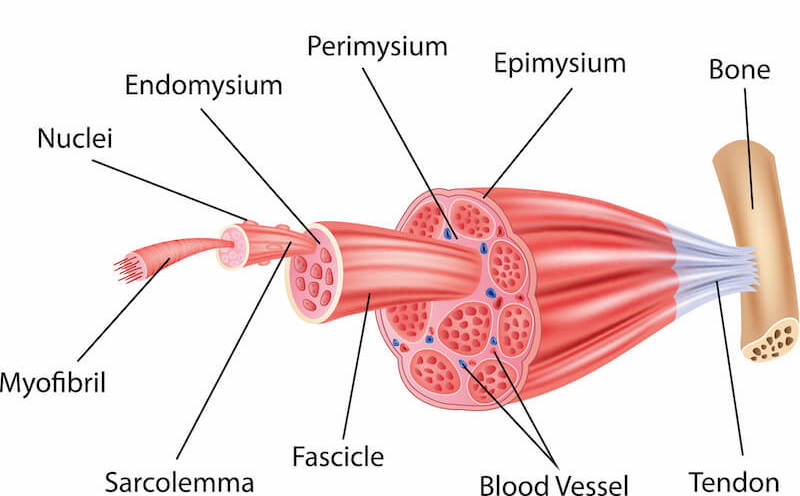There are several key stages when it comes to breaking down muscle fibres before they can be rebuilt stronger.

But first, what is a muscle?
Muscles contain bundles of fibres within protective sheaths called fascia, which are themselves bundled together.
The biggest bundle is the muscle itself. The next biggest is the fascicles, containing the long, single-celled muscle fibres.
These are then divided into myofibrils, which are divided again into myofilaments, made up from chains of sarcomeres.
1. WARM-UP
As your heart rate increases, blood is pumped into your muscles, warming them up and allowing them to extend fully. The blood also supplies muscle fibres with oxygen.
2. TENSION
From the start of a rep, your muscles are under tension and stretched. As a result, more blood is pumped into the protective sheaths of the muscle fibres, supplying even more oxygen and nutrients.
3. SPARK
As you lift a weight, your central nervous system relays this to the nerves in the sheaths around the muscle fibres, telling the fibres to contract.
Your muscles should activate in a particular sequence, which your nervous system adapts to. As you repeat the workout, your nerves get more efficient, allowing you to do more.
4. CHEMICAL REACTION
Adenosine triphosphate (ATP) is the immediate energy source for these muscle contractions. It is broken down within the body’s cells to release energy.
The cells’ creatine, phosphate and glycogen reserves are also converted into ATP. Lactic acid is a by-product of this process.
5. BURN
Once the glycogen stores in your cells have been depleted and lactic acid starts to builds up, the muscle can’t work efficiently, so you have to rest.
As you do so, aerobic (oxygen-based) muscle respiration occurs, processing the lactic acid back into glycogen and giving you an energy source for the next set.
6. SUCCESSFUL FAILURE
As you reach failure on the last set of a given exercise, your fast-twitch muscle fibres are completely fatigued. Microscopic tears (‘microtears’) occur in the myofilaments, the smallest fibre bundles in your muscles.
7. REPAIR AND GROWTH
Your muscles start to grow during the post-workout repair process. Your body fixes the microtears by adding the amino acids actin and myosin to the myofilaments, which causes them to grow. Your muscles also adapt to store more glycogen, providing more energy for next time.








